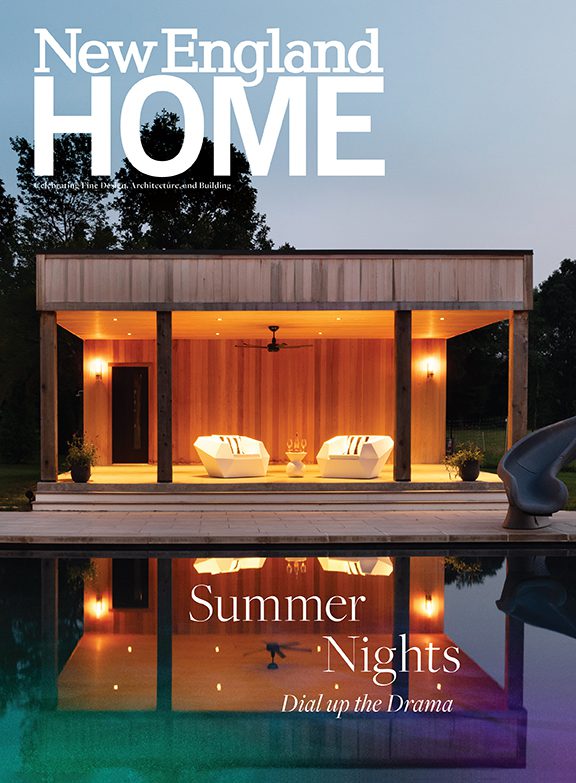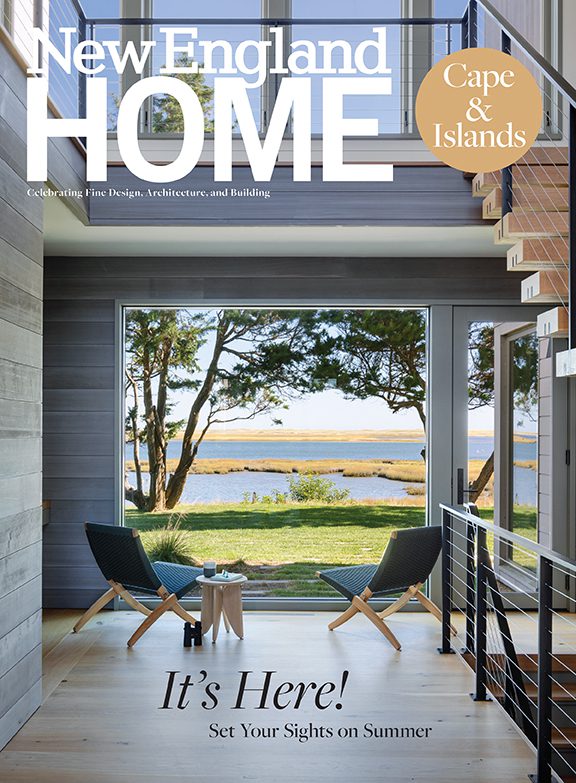The Art of the Waterfront Home
August 16, 2024
Sponsored Content
Text by Maria LaPiana
Living on the water is one of life’s pleasures; it relaxes the body and renews the soul. How to enhance the experience beyond measure? With a waterfront home of your own. Whether you’re refreshing an existing structure, are ready to break ground on a new home, or are still manifesting, you’ll want a seasoned professional design team by your side.
Building Your Dream Waterfront Home
The privilege (and responsibility) of designing a waterfront home isn’t lost on architect Paul Muldoon and his associates at SV Design. They get it. And they embrace the unique challenges of every waterfront project—from optimizing views to blending beauty and luxury with sustainability.
The ideal water-adjacent home celebrates its location, but more importantly it brings a homeowner’s vision to life. “Our overriding goal is to ensure that we’re creating a dream home for our clients,” says Muldoon, a principal in the firm based in Beverly and Chatham, Massachusetts. He believes in tailoring every detail of every seaside retreat to a client’s style, lifestyle, and pocketbook.
The creative process at SV Design is thoughtful and holistic, offering clients a one-stop-shopping experience. “Our architects coordinate with our interior design team very early on,” says Muldoon. Interiors are part of the schematic from the start, coming into sharper focus as a project unfolds. The design objective is one and the same.
Selecting the Site for Your Waterfront Home
“It all starts with how a home is sited,” says Shelby Littlefield, a senior interior design project manager at SV Design. “We count on our architects’ due diligence in capturing the views. “We take our cues from them and from nature and use them to inform our design.”
There’s much to consider beyond views—from topography and environmental restrictions to recreational access and potential for flooding. “There are always zoning and environmental guidelines, so we work closely with civil engineers,” says Muldoon. “We establish where a house can be; that’s the first step. It has to be a place that is good for the house and good for the habitat.”
“There is inspiration in every site, but it really it comes down to the homeowners again,” continues Muldoon. Consider the client who wants a home that looks like it belongs on the Cape, but whose tastes skew more contemporary. In that case, the architect says he may choose familiar materials—clapboard and cedar shingles, as well as newer, composite materials—but lean in to a more streamlined design.
Maximizing the View
A home’s orientation is critical. “We always want to know if a client likes to wake up to the sunrise, or if they prefer a darker northern exposure,” says Muldoon. Framing views is equally important. Muldoon likes to create unexpected opportunities; he once designed a transitional stair hall with a very specific vantage point out to the water. Its placement guaranteed the client “would enjoy that amazing view a minimum of two times a day.”
Capturing views is part of a larger discussion on window treatments, says Littlefield. “It depends on the homeowner, and whether they want to maximize views and/or add privacy, and whether it’s a public or a private space.” Whenever possible, she recommends treatments that give the house a consistent look when viewed from the water.
A waterfront home begs for an indoor-outdoor connection. It can be achieved structurally with an abundance of windows and doors—especially NanaWalls and other moving-glass systems that fold, slide, or swing open. Layering helps you see and move between spaces with ease. “If you can look through a dining room to a screened porch, to a patio, to a lawn—and get there without much traveling or too many steps—it keeps visual communication lines open,” says the architect.
Littlefield relies on color and natural materials to make the alfresco connection. A coastal palette is a given in many of her interiors, but it’s not what you’d expect. “What’s different about water in the Atlantic Ocean is that it appears slightly green,” she says. “It’s not the same as the turquoise water in the Caribbean. So, here we tend toward a more neutral palette—more muted, less punchy.”
Natural materials own the day every day on the water. The designer says she chooses natural fibers and materials in warmer wood tones, such as driftwood and dune grass. “Today’s indoor/outdoor materials are nicer and have a better hand than those of the past,” she says. They make it easier to create cohesive looks that blur the lines between inside and out.
From renovations to new builds, Muldoon estimates that some fifty to sixty percent of the firm’s projects involve some aspect of waterfront construction. He says they do what they love and love what they do—with every client an integral part of the team. “The homes we design are very much our clients’ homes,” he says. “We are just stewards of the design work.”
SV DESIGN LLC
svdesign.com
North Shore
126 Dodge Street
Beverly, MA 01915
978.927.3745
Cape Cod
693 Main Street
Chatham, MA 02633
508.348.5485
Share
![NEH-Logo_Black[1] NEH-Logo_Black[1]](https://b2915716.smushcdn.com/2915716/wp-content/uploads/2022/08/NEH-Logo_Black1-300x162.jpg?lossy=1&strip=1&webp=1)


















You must be logged in to post a comment.